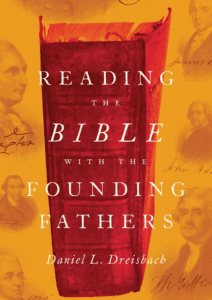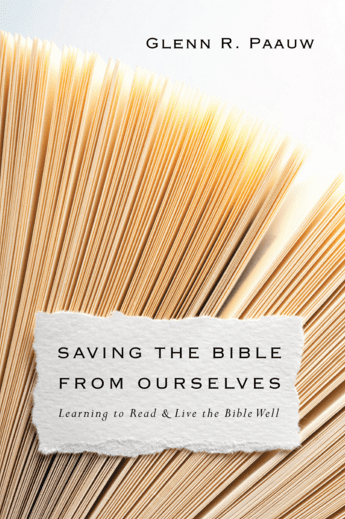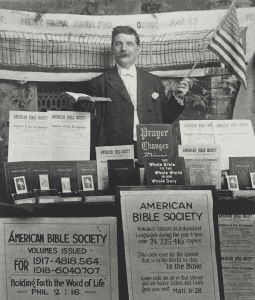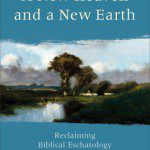What happens when the Bible is studied at a university? The bigger question is this: What happens to the Bible when it is studied at a university? Those are questions behind Michael Legaspi’s excellent study The Death of Scripture and the Rise of Biblical Studies (Oxford Studies in Historical Theology).
 This book is chock-full of insights and observations, and is a book that ought to be on the shelf of every college and seminary library, for it examines what happens in the 18th and 19th centuries when Scripture moved from being the Church’s Bible or the Confessional Bible to the “death of [the Bible as] Scripture” as it arose anew as The Academic Bible, or the Bible as it was examined in the university. That period developed a “post confessional” hermeneutic. In effect, they cut the claims the Bible had on the individual when the individual read it.
This book is chock-full of insights and observations, and is a book that ought to be on the shelf of every college and seminary library, for it examines what happens in the 18th and 19th centuries when Scripture moved from being the Church’s Bible or the Confessional Bible to the “death of [the Bible as] Scripture” as it arose anew as The Academic Bible, or the Bible as it was examined in the university. That period developed a “post confessional” hermeneutic. In effect, they cut the claims the Bible had on the individual when the individual read it.
The academic Bible is the one studied post-confessionally: outside the domains and parameters of the confessions of the Church. The scriptural Bible is the one studied through the lens of the Church, and through the lens of the creeds and confessions.
The academic Bible is studied as an object; the scriptural Bible calls the reader to account. The academic Bible is studied at a distance; the scriptural Bible draws the reader before God. For the academic Bible, the Bible is a text; for the scriptural Bible, the Bible is Scripture. The Bible was co-opted by social virtues that are part of the liberal, progressive and culture of irenic toleration.
Legaspi sees this so well:
The problem is that these rather thin, pale virtues seem only thinner and paler when compared to the classical virtues associated with the scriptural Bible: instead of bland tolerance, love that sacrifices self; instead of an agreeable reasonability, hope that opens the mind to goodness and greatness that it has not yet fully imagined; and instead of critical self-awareness, faith that inspires and animates the human heart. Academic criticism tempers belief, while scriptural reading edifies and directs it.
I’m interested in your thoughts: How do we study the Bible? How is the Bible meant to be studied? What happens when we study the Bible as an object rather than through faith? How is it “destructive to faith” if we study the Bible apart from faith? Do you agree with my observation about “bracketing”?
Here’s what Legaspi does: he examines how the Bible was studied at the University of Göttingen under the powerful presence of J.D. Michaelis (1717-1791). So, yes, this is a book in the field of the history of interpretation. And he has excellent sections on Göttingen, the rise of classical studies, the distinction between the 18th and 19th Centuries (the 18th being more socially concerned while the 19th became much more historical-critical), and the various professors at Göttingen. That university was about Bildung — development of social character and cultural formation. The Bible was part of that Bildung.
Perhaps the most important observation I can make about this book is that Legaspi forces us to see how the academic Bible was really a cultural Bible, for the university used the Bible for the good of society and culture. It was, in effect, colonized by the 18th and 19th Century German social projects and visions and ideals. This rips the Bible of its prophetic power, tames the strengths it has, and creates readers who think they are in control. This is the most danger approach to the Bible I can imagine. I see much the same in some of the more socio-pragmatic approaches to the Bible today.
Back to Legaspi’s theme: for instance, JD Michaelis was obsessed with showing how Moses was much less of an Israelite leader than a force (leader) in the ancient classical Israelite culture. And in this context I’d say Legaspi, while he recognizes the anti-Semitism at work in some of Michaelis’ work, lets him off the hook too easily: Legaspi minimizes Michaelis’ culpability by not recognizing the power and influence — and it was nothing short of monumental — of Michaelis.
Legaspi thinks the Reformation precipitated the academic Bible: it cut the Bible from the Catholic Church, it led to an increasing number of groups who each had a confessional — but different confession — approach to the Bible, and he contends this minimized the authority of the Bible and led to the death of the Bible as Scripture in the European universities. Legaspi finds a better model in Erasmus, but knows the humanists turned the Bible into a text in the context of other texts from the classical world. Legaspi does a great job setting Michaelis in context.
Michaelis’ project was to salvage the Bible but to do so the Bible had to become another academic subject. The Bible became a part of a common cultural legacy. At best, that’s where it is in the modern university.
Let this be said: what approach we use in reading the Bible determines not only what we see in the Bible or get from the Bible but also who we become. In other words, if we bracket faith and bracket theology and bracket orthodoxy, we will eventually learn to read the Bible without faith and theology and orthodoxy, and that leads — often enough — to the lack of faith, the lack of theology, and the lack of theology. What is permitted it is what comes out.














